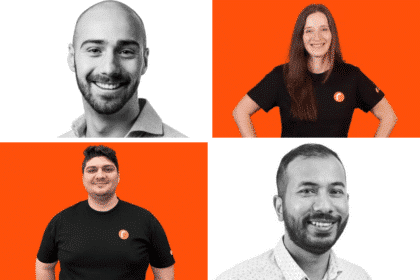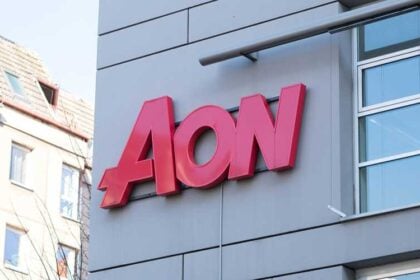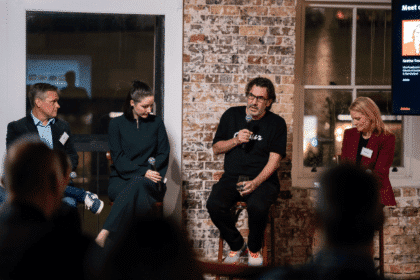From loosely aligned warring clans to a better reflection of how its big clients operate, Jens Monsees is turning WPP AUNZ’s many businesses into a unified company able to serve a diverse range of its clients needs.
It’s the end of my interview with WPP AUNZ’s Jens Monsees and we’re standing up to leave the salubrious surrounds of the meeting room within Australia’s largest communications company when he shares a personal anecdote with me.
Jens’ 12-year-old son has been struggling with adjusting to his new life in Australia. He can’t speak his native German, he’s been separated from his friends and living in Sydney’s northern beaches is long way from his homeland. But obviously there’s a lot of upsides to living in Australia, not the least if which is the near COVID-free existence we’re leading as we head into summer.
Jens is confident his son will move through the stages of change quickly and be back to sucking the marrow out of bones in this the Lucky Country. Jens, too, is confident his 4000 strong work force across 60 brands will adapt to their new normal and resume the organisation’s rightful place as the commanding power within Australia’s advertising landscape.
“I think that Martin Sorrell actually did a lot of things right. The only thing he missed out was integrating. So, you buy the right companies. Yes, that’s good. But he was stacking up all of them like silos, and then you don’t find any synergies between them.
“What we are now talking about is one company and many brands. Workflows, processes, IT systems; they are not differentiating: why not put them all together? A common back end and having a platform underneath. That’s the journey we are on,” says Monsees.
He quickly sketches out the now well-documented strategy to me and explains the context of living in a more dynamic and fast-changing world where transformation is the common theme of our time. He quotes the radically decreased tenure of companies on the Dow Jones index and all of the smart, intelligent arguments you would expect from the veteran of three previous successful transformations.
What I didn’t expect, was how quickly Monsees would turn our discussion to the reason why 70 per cent of transformation projects are failing: people.
“What are the drivers for a successful transformation? The biggest factor of successful transformation is the people, not the strategy. Often transformation projects are just focusing on changing capabilities, product service offerings, but in fact, they are leaving out the people. This is why in every successful transformation, we have to drive it from the people’s first talents, lifelong learning and being flexible or with a flexible mindset. Agility and adaptiveness are the main drivers of successful transformation,” he says.
Ironically, the arrival of the pandemic was a boon in assisting the adoption of change. Monsees points to the adoption of Microsoft Teams as a case in point. While the organisation had been pushing the collaboration tool and failing to get above a 30 per cent adoption rate for years, within a week of COVID forcing lock downs, adoption shot to 95 per cent.
“So sometimes we need an external factor, an external event, an external force to shake up our common habits and ways of working to actually make change happen,” he observes.
And while COVID certainly wasn’t a boon for WPP or anybody else’s top line, the one thing Monsees refused to allow his company to cut back on was its expenditure on people.
“In COVID we stopped a lot of our expenditure because until May we were loss-making and we had taken a big hit on our top line … we were stopping all our investments and expenditures because we needed to save cash and money to be able to operate. What we didn’t stop, in fact we actually increased it, was our investment into people and talent.
“We were designing new programs: how you stay mentally healthy when the kids are online schooling when we work from home, how to find pauses in the day when you are back-to-back with Teams meetings . . .
“We over-invested in our talent and teams, and this is how we were actually successfully being able to deliver business continuity and also helping our people to adapt to the new norm of working from home.”
Monsees also says the leadership team every year goes through a 360 feedback process to see what’s working and what can be done better. And not everything is perfect. But the data is available as to what needs to be fixed.
“I’m very proud that we also have for the first time completed an employee engagement survey. So, we have data from there. What [the employees want] is very clear: They have very good collaboration within their own brand or team, but there’s room for improvement to work across brands. And that’s quite new, because we just started to [collaborate between brands] in February and then COVID hit. So, I thought that was quite remarkable for that to be a common theme.
“So now we are one company and that makes a huge of a difference. You basically change the motor now to be like Nestle, or Unilever, or Procter & Gambler where you have one company, but then WPP or Procter or Nestle have different brands like Milo, Purina, Nescafe, Nespresso or other brands, serving different clients.”
According to Monsees, the clients are very happy with the new way of working. “When everybody was in silos, you could not approach the other capabilities that sit in another brand. For example, Wunderman Thomson would say we can do everything because they were running their own P&L. And then they sometimes missed out because they could not deliver. They should have passed it on to AKQA or to Group M or to a PR brand or to whomever,” he explains.
The answer of course came down to money. Monsees changed the incentive scheme so now brand managers are remunerated half on their own P&L and half for cross sell or up-selling to another brand within the company.
“I know that my predecessors we’re talking about collaboration, putting the client in the middle, but that doesn’t mean anything if you still only incentivise leaders on a single brand. Because then why? Why should I do it? What’s in it for me? That’ the first question every employee asks,” he says.
Without a doubt, Monsees has age on his side when it comes to having WPP AUNZ quickly adapt to change. The average age within the business is 28 years old.
“They are highly adaptive, and very much hungry and curious and open to change. And our, our current employee engagement survey showed that pattern. But we also have to think about our, our senior management and our leaders. Obviously, they have to adapt and change as well. They have to learn the new skills of tech or digital, even if they are very successful in their career.
“We have to respect what they did in the past and what they were be able to achieve. And now we have to support them of mastering and learnings and new skills. The way of you collaborate in a connected and globally, um, uh, integrated world changing means giving up habits, um, questioning the status quo, being critical of the things that you did in the past. Sometimes it takes a lot of effort, and sometimes people cannot adapt to a new requirement, a new external factor, a new dynamic challenge.
“At the end of the day, it’s always the people who decide what they can take on and what they cannot take on in terms of taking a new approach to a new dynamic market situation.
“The most important factor is that you build a culture of trust and also have patience with people. There’s an expression in German that says: who wants finds ways and who doesn’t want finds reasons.”








